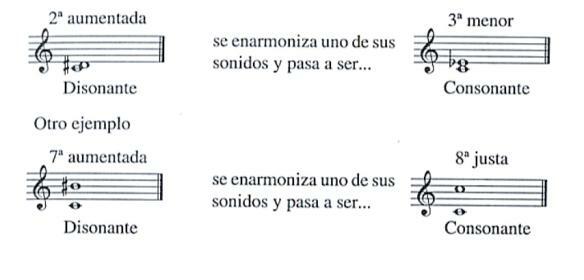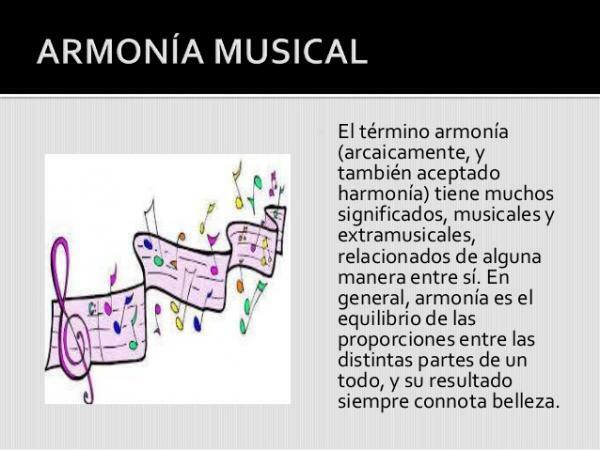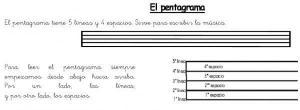Meaning of musical DISSONANCE

Image: Classroom of musical language
Music can sometimes seem like an intricate terrain as it has a own language and sometimes very specific. This art is full of terms that, although they may seem complicated, are important to facilitate communication and expression in your environment. Sometimes you will hear terms like harmony, tensions, musical dissonance... In this lesson from a TEACHER you can learn precisely about the latter: the meaning of musical dissonance.
Before discovering the meaning of musical dissonance, it is important that we understand the element of sound. As we all know, music is the art that explores sound as an art form. While music is an expressive and creative art, we must remember that is born from a physical phenomenon which is sound and, as such, it has physical properties that behave in a certain way and that we perceive through the senses.
Although music can sometimes depend on personal taste or cultural aspects, it is true that there are certain rules and standards of theory that allow us to understand concepts of music.
harmony. It is thanks to these theoretical factors that we can define when a sound can be pleasant or unpleasant, or when it allows us to feel in a certain way.In order to know what musical dissonance is, it is important that we previously understand other musical concepts that are essential. They are as follows.
- The first musical concept that we must understand is harmony. Harmony is the study of relationship that the notes have with each other and this is measured by the distances that exist in tuning between one and the other and the function they fulfill in certain contexts. Harmony is perhaps the most important factor in a work to determine its structure and give it a meaning that can be understood and enjoyed in a conventional way.
- The most direct way to verify harmony is for example a chord, which is 2 or more notes that sound simultaneously. Thanks to the theory we can determine the function that each of the notes in the chord fulfills and thus we can also give the chord a name.
With these two concepts we can now proceed to speak of a musical dissonance.

Picture:
Now we can give you the meaning of musical dissonance. By studying harmony we can conclude that there are notes that are "compatible" with each other and others that don't they have such a good relationship. When two notes or more sound good together and produce a sound that is pleasant to the ear, we call it consonance. Now on the contrary, if two notes or more produce an unpleasant sound to the ear when sounding together, this is what we call dissonance.
Why do musical dissonances occur?
The musical notes have a specific tuning, given by a frequency (amount of vibrations in a given time). Although our ears mainly perceive a note, the reality is that many other small sounds are found in that sound, almost imperceptible. We call these sounds harmonics.
The harmonics They are the main factor that makes one note compatible with another and this usually happens because of the distances between the notes. It often happens that if there is a short distance between two sounds, the most probable physics is that a dissonance will occur. A clear example is a minor second interval, that is to say that there is a distance of half a tone between one note and another. This can be verified very easily on a piano, by pressing a white key at the same time as a black one that is right next to it.

Image: Musical composition
The first idea that may occur to you with dissonances is that when they do occur, it is most likely a mistake, like when a musician makes a mistake when playing the wrong notes. This may be true but it is not the absolute truth. Although most of the time a consonant harmony is sought in musical works, dissonance can be a very valuable tool to produce certain sensations, or to break conventional schemes and carry out interesting experiments.
This would be the case of jazz, for example, a genre that seeks to expand the frontiers of harmony. For many, jazz can be a difficult style to listen to, but what is certain is that a good jazz musician knows very well what he is doing in harmonic terms.
Another case in which dissonances are very useful is in the incidental music, (music with the purpose of accompanying a medium such as cinema, theater, radio... etc.) since many times the expression of feelings is sought over listening to music as such. You can find many dissonances in horror movies for example, where the sounds are a crucial part to keep you in suspense or with the creeps.
Already with knowledge of the meaning of musical dissonance, you will be able to have a greater appreciation of music and you will be able to be aware of finding this new element when you listen to it.



